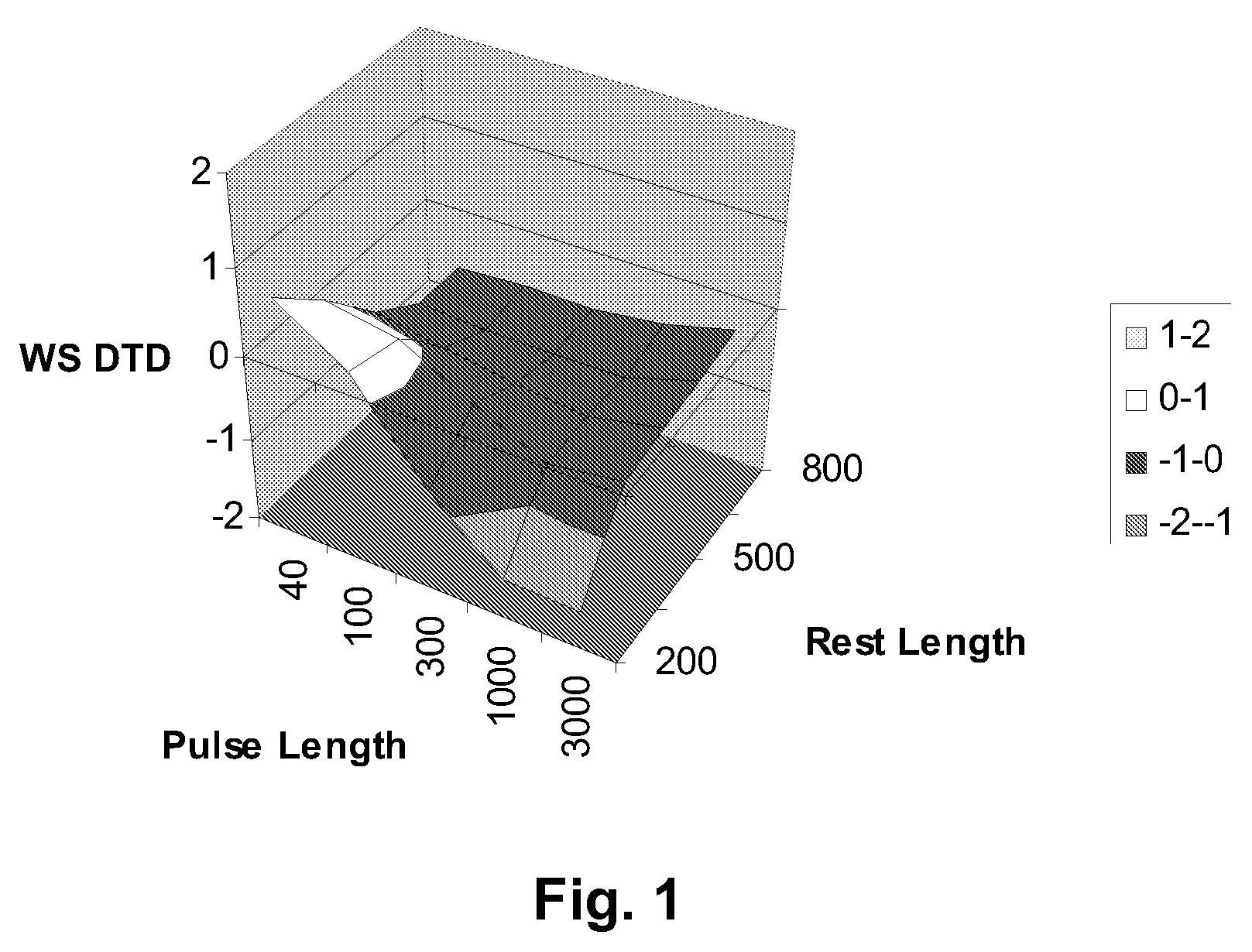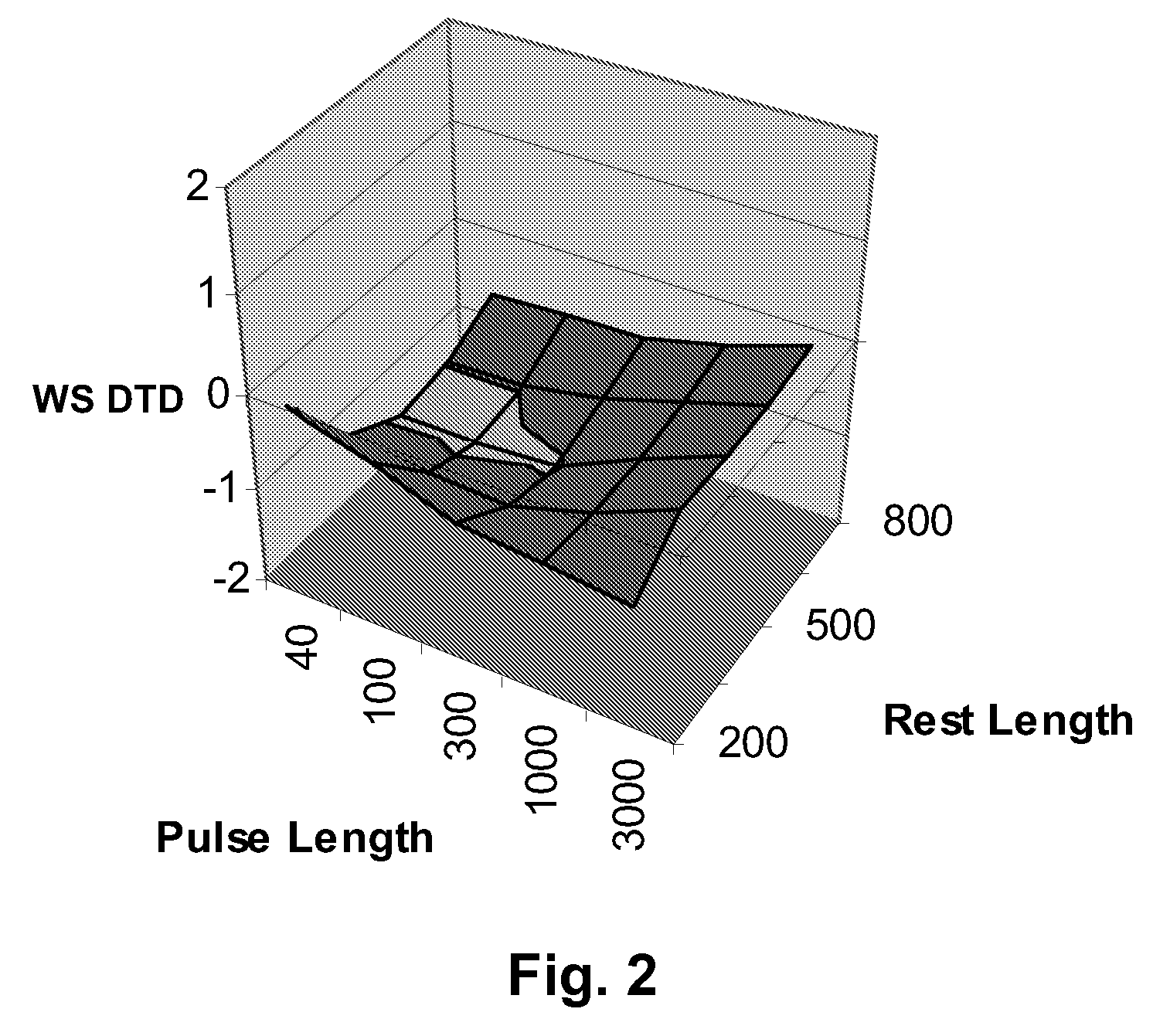Electrophoretic media and displays with improved binder
a technology of electrophoretic media and binder, which is applied in the direction of electrolysis components, instruments, cells, etc., can solve the problems of gas-based electrophoretic media being susceptible to the same types of problems, preventing their widespread use, and inadequate service life of these displays
- Summary
- Abstract
- Description
- Claims
- Application Information
AI Technical Summary
Benefits of technology
Problems solved by technology
Method used
Image
Examples
example 1
Synthesis of Polyurethanes
[0034] The reactants used in the experiments were as follows:
[0035] H12MDI (IUPAC name bis(4-isocyanatocyclohexyl)methane)
[0036] Five different polyurethanes were used in these experiments, as set out In Table 1 below:
TABLE 1Poly-Solids,urethaneDiisocyanateDiolMwpHwt. %AH12MDIPPO641007.740BTMXDIPPO387008.440CTMXDIPCL297007.634DTMXDIPPO45000-550007.5-8.535EH12MDIPolyester 100-200K7.5-8.540
[0037] Polyurethanes A, B and C were formulated to have the same molar ratios of diol to diisocyanate; Polyurethane D is a custom polyurethane prepared by a third party in accordance with U.S. Patent Publication No. 2005 / 0124751, while Binder E was also a commercial polyurethane.
[0038] The synthesis of Polyurethane A was carried out under nitrogen as follows. A jacketed 500 mL glass reactor was equipped with a mechanical stirrer, a thermometer, and a nitrogen inlet. H12MDI (20.99 g of Bayer Desmodur W, 0.08 mole), poly(propylene glycol) diol (50 g, supplied by Aldri...
example 2
Electro-Optic Properties
[0042] In order to evaluate the effect of the various polyurethane binders on the electro-optic properties of electrophoretic displays, electrophoretic capsules comprising an internal phase containing carbon black and titania electrophoretic particles in a hydrocarbon fluid, surrounded by a capsule wall formed from a gelatin / acacia coacervate, were prepared substantially as described in U.S. Patent Publication No. 2002 / 0180687, Paragraphs [0067] to [0072]. The resultant capsules were mixed with the binders and binder blends specified below and formed into experimental single pixel displays substantially as described in Paragraphs [0073] and [0074] of this Publication, except that a backplane comprising a carbon black electrode on a polymer film was used. The lamination adhesive used was Binder D doped with 180 parts per million of tetrabutylammonium hexafluorophosphate (cf. the aforementioned U.S. Pat. No. 7,012,735).
[0043] The resultant experimental displa...
example 3
Effect of Binder Composition on DTD
[0047] The experiments used to generate the graph shown in FIG. 1 were repeated with the same capsules but using as the binder Polyurethane D from Table 1 above. The results are shown in FIG. 2.
[0048]FIG. 2 shows substantial reduction in DTD compared with FIG. 1; the overall Max-Min range is reduced from 2.4 L* to 1.2 L*, and the sign of the DTD is generally opposite to that in FIG. 1, thus implying that the electrophoretic particles were experiencing a smaller voltage than that actually applied between the electrodes.
[0049] The experiments which produced the graphs of FIGS. 1 and 2 were repeated several times using the same binders but different types of capsules. Although the values of the DTD range varied considerably with the specific type of capsules used (varying from 3.4 to 7.2 L* units for the FIG. 1 binder and from 0.6 to 4.7 L* for Polyurethane D), in every case the Polyurethane D binder showed a lower DTD range than the FIG. 1 binder....
PUM
| Property | Measurement | Unit |
|---|---|---|
| temperature | aaaaa | aaaaa |
| temperature | aaaaa | aaaaa |
| temperature | aaaaa | aaaaa |
Abstract
Description
Claims
Application Information
 Login to View More
Login to View More - R&D
- Intellectual Property
- Life Sciences
- Materials
- Tech Scout
- Unparalleled Data Quality
- Higher Quality Content
- 60% Fewer Hallucinations
Browse by: Latest US Patents, China's latest patents, Technical Efficacy Thesaurus, Application Domain, Technology Topic, Popular Technical Reports.
© 2025 PatSnap. All rights reserved.Legal|Privacy policy|Modern Slavery Act Transparency Statement|Sitemap|About US| Contact US: help@patsnap.com



